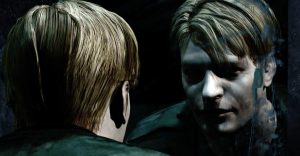Gundam: 6 Ways G No Reconguista Is Underrated

There are few entries in the long-running Mobile Suit Gundam franchise that are as controversial as G no Reconguista, more commonly known as G-Reco by fans. Marketed as the triumphant return of series creator Yoshiyuki Tomino to the franchise, expectations ran high for the show as an impressive pool of talent was drawn together to take part in the production.
Upon its release, though, reactions among fans were mixed. Detractors claimed the show was confusing above all else. Breakneck pacing, confusing characters, and a lack of expository dialogue about even the setting’s basic components left viewers bewildered. The show deserves more credit than it was given, though, as it’s a bold new take on Gundam that can easily stand among the franchise’s other offerings.
6 It Has A Unique Identity

Series director Yoshiyuki Tomino was transparent during pre-production about the fact that G no Reconguista was intended for a younger audience, perhaps one outside of the “core” Gundam demographic. Indeed, Tomino has famously been fed up with Gundam since 1993’s Victory Gundam and the disastrous production that accompanied it. Returning to the franchise only twice since then, with 1999’s Turn A Gundam and G no Reconguista, both of these works are markedly different from accepted Gundam orthodoxy.
Still, it seems that audiences at large were unprepared for just how different G Reco would end up being. Reactions were intensely mixed, earning G-Reco the honor of being the worst-ranked Gundam alternate universe on MyAnimeList. Far-flung from the serious war dramas that made Tomino famous in the first place, this new anime was irreverent and deeply strange. Still, that uniqueness remains a major part of the show’s appeal for its fans. It’s an odd one out for the franchise, to be sure, but perhaps that was the point.
5 Tomino-isms

Yoshiyuki Tomino is one of anime’s greatest working directors. Famous for creating some of the best war stories in the industry, namely Mobile Suit Gundam and its sequels, he has the reputation of an uncompromising artist; a harsh critic of not just other works, but his own as well. Critics often argue that Tomino cares little for his audiences, as his works feature misguided and complex characters, breakneck pacing, and frequent plot twists. At the same time, though, it’s that confidence of vision that has made him successful in the first place. Nobody does Tomino better than Tomino, after all.
G-Reco, for its part, is the most Tomino-y anime of recent memory. The original series was maligned upon its debut for its seemingly incoherent character motivations, complex factional alignments, and constantly shifting loyalties and allegiances. The director’s unique and odd approach to dialogue, dubbed “Tomino-isms”, are present throughout as well. While that might have left some wishing they had a “Tomino to English” translation guide with the anime, fans of his work appreciated the intense authorial stamp their favorite director had left on this new Gundam entry.
4 Inventive Mechanical Design

G-Reco features some of the most distinctive mechanical designs in the Gundam metaseries. Befitting a show that’s far removed chronologically from any other entry in the franchise, the mecha of G-Reco are varied, expressive, and experimental. So odd are some of the show’s designs that characters will occasionally comment on the strange appearance of some of the mobile suits.
It might contain some of the silliest mobile suit designs in Gundam, but it also has many of the most interesting. Some, such as the Mack Knife, look exceptionally strange on paper but come into their own once they’re seen in motion. Others, like the Wuxia, are bold departures from the conventional design philosophy of the franchise. While not every new mobile suit design is successful, they are all memorable on account of their uniqueness. It’s refreshing to see a show that’s willing to take as much of a chance with its robots as G-Reco is.
3 Interesting Lore

G-Reco doesn’t feature much in the way of explanatory dialogue. The viewer is tossed into the setting and must try their best to keep up as a bewildering procession of names, countries, and concepts related to the show’s lore flash by. It can be a little alienating for a first-time viewer, but those who take their time with the show and learn about its setting will find some interesting and odd lore underneath the surface.
For example, the setting’s principal religion, SU-Cordism, is centered around the veneration of a holy space elevator used to deliver all-important photon batteries to the Earth from space. This practice gives believers divine right to an energy monopoly over the world’s countries, cementing their country’s primacy in world affairs. Additionally, there’s a running subplot dealing with the oppression of the “Kuntala”, an underclass of people who, supposedly, were once grown as food during the Earth’s dark history long ago. These odd tidbits flash by quickly in the original anime, but the ongoing compilation film series has taken measures to give this sort of exposition more time to breathe, making it easier for audiences to get a feel for the setting.
2 Animation

In an era where mecha animation increasingly favors CGI over traditional 2D methods, G-Reco stands out as an ambitious showcase of what can be achieved with this medium of animation. This is an unambiguously fantastic-looking show, with memorable action sequences that show Tomino hasn’t lost his touch as a director. He has been responsible for some of the best battle scenes in mecha anime, after all. The fight scenes are supported by stellar production values, keeping the animation fluid, energetic, and readable.
Although the robot scenes get much of the credit for their visual splendor, the character artistry is impressive as well. Outside of being fluid and expressive, the character acting in G-Reco is loaded with little touches that give the audience a sense of a character’s habits and mannerisms. It’s an excellent showcase of how animation can and should be used as a characterization tool to deepen the audience’s understanding of a work’s cast.
1 Character Designs

The energetic and memorable character designs featured in G-Reco are the work of one Kenichi Yoshida, a frequent colleague of Tomino’s and character designer on another of the director’s works — 2002’s Overman King Gainer. Perhaps best known for his work on Eureka Seven, an excellent mecha anime for beginners to the genre, Yoshida’s colorful and lively, yet believable.
Yoshida’s work on G-Reco is instrumental to the anime’s sense of style. The playful designs compliment the show’s goofball atmosphere perfectly, but more importantly, they instill each character with a unique identity. Even the characters who don’t get much in the way of dialogue have the air of being fully fleshed out, detailed people, in large part due to the unique approach to their looks. The audience always feels like they have a strong grasp on a character’s personality, even if they don’t have much in the way of spoken dialogue.
About The Author

















